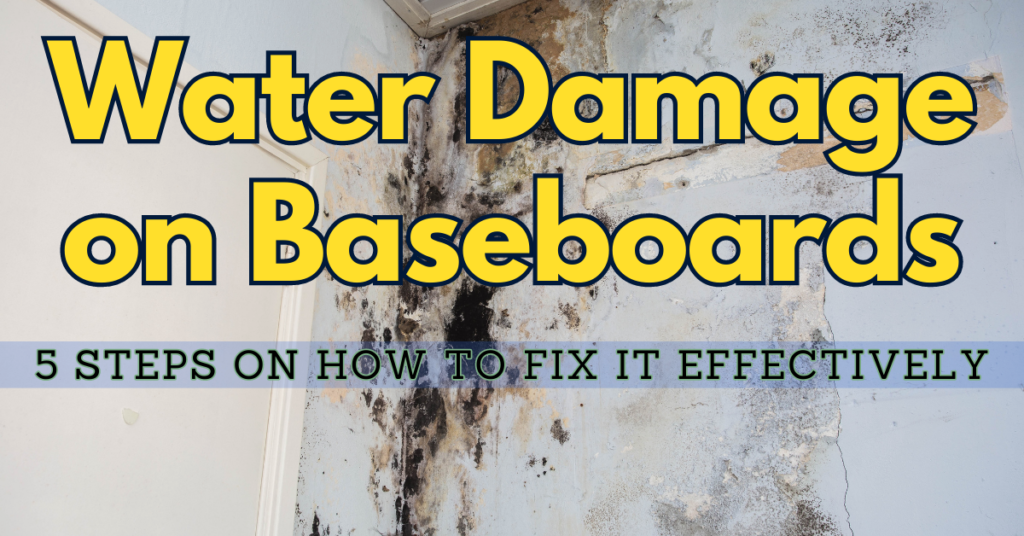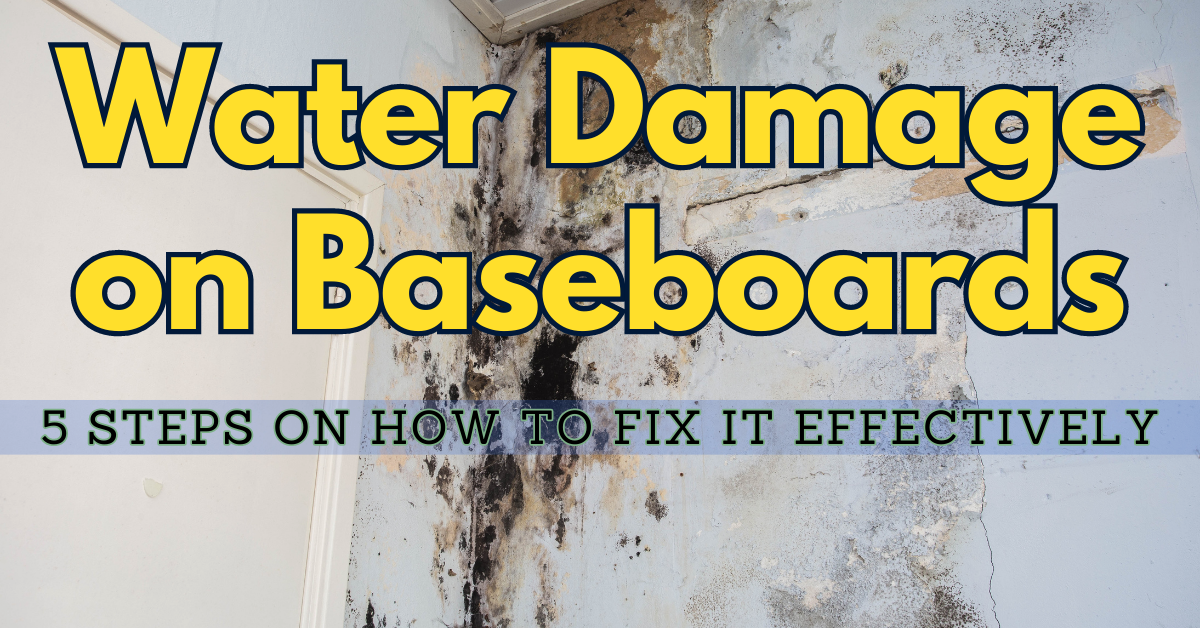When water seeps into the baseboards, it can cause a lot of trouble and expenses for homeowners. Whether it’s from a leaky roof, burst pipes, or flooding, moisture can make the baseboards bend, break, or decay. If you ignore the problem, water damage can lead to the growth of mold, problems with the structure of your home, and even put its stability at risk.
Fortunately, there are steps you can take to fix this issue and restore your home’s aesthetics and structural integrity. In this guide, we’ll discuss the signs of water damage, how to repair water damage on baseboards, and when to call in professional water damage restoration experts.
Signs of Water Damage on Baseboards
The first step in fixing this type of issue is identifying the signs of water damage. Some common signs include:
- Peeling paint or wallpaper
- Visible stains or discoloration
- Warping or swelling of the baseboards
- Mold growth or a musty odor
- Soft or spongy areas of the baseboards
- Visible water damage on other areas of the home, such as ceilings or walls
If you notice any of these signs, it’s important to address the water damage on baseboards as soon as possible. This will prevent further damage and potential health hazards.
How to Repair Water Damage on Baseboards
Depending on the severity of the damage, you may be able to repair baseboard water damage yourself. Here’s a step-by-step guide on how to fix water damage on baseboards:
- Remove the damaged baseboard: Use a pry bar to carefully remove the damaged baseboard from the wall. If the baseboard is nailed to the wall, use a hammer to carefully pry the nails out.
- Cut a replacement board: Measure the length of the damaged baseboard and use a miter box to cut a replacement board to size. If you have MDF baseboards, be sure to use a moisture-resistant option to prevent future water damage.
- Install the replacement board: Apply a generous amount of construction adhesive to the back of the replacement board and press it firmly into place. Use finishing nails to secure the board to the wall, being careful not to over-nail or split the wood.
- Sand and paint: Sand the edges of the replacement board to smooth out any rough edges. Then, paint or stain the baseboard to match the rest of the room.
- Fit and set in place: After doing steps 1 to 4, it’s now time to fit and set your new baseboard in place! You will be needing nails and caulk for this part to make sure that it will have a secure fit. Just apply the caulk to the back part of your replacement baseboard. Then hammer it using the nails for wall attachment.
Address the Issue Right Away
In conclusion, water damage on baseboards can be a frustrating and costly problem for homeowners. By identifying the signs of water damage and taking immediate action to repair the damage, you can restore your home’s aesthetics and structural integrity.
Whether you choose to tackle the repair yourself or call in professional water damage restoration experts, it’s important to address this water damage issue as soon as possible. Our goal is to prevent further damage and potential health hazards.
When to Call in Professional Water Damage Restoration Experts

If you notice extensive water damage on baseboards or suspect mold growth, it’s important to call in professional water damage restoration services.
Superior Restoration has the equipment, expertise, and experience to repair water damage on baseboards and prevent further damage to your home.
In addition to baseboard repair, our team of experts can also provide mold remediation services and identify any hidden sources of water damage. Please contact Water Damage Irvine, today!





